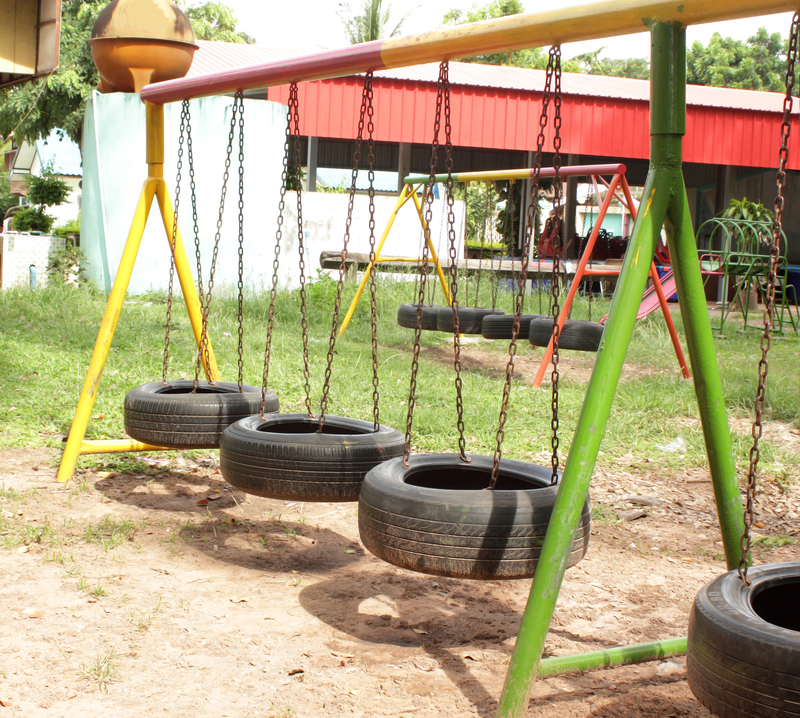Revolutionize Your Home with Conscious Waste Prevention Efforts
Are you overwhelmed by the amount of waste your household produces? The modern home is a hub of comfort and convenience, but it often comes with the steep price of excess waste generation. Understanding and implementing conscious waste prevention can revolutionize not just your home, but your entire lifestyle. This in-depth article will guide you through step-by-step strategies, tips, and innovative ideas to significantly reduce waste, foster sustainability, and create a healthier living environment for you and your family.
Why Conscious Waste Prevention in the Home Matters
Waste is more than just an eyesore; it has far-reaching impacts on the environment, economy, and health.
- Landfills contribute to greenhouse gas emissions and leach toxins into soil and water.
- Excess consumption depletes natural resources, exacerbating climate change and biodiversity loss.
- Improper disposal practices can create health hazards right inside and around your home.
Shifting your mindset to prioritize waste prevention at home doesn't just help the planet; it often saves money, increases organization, and boosts your overall well-being.
What is Conscious Waste Prevention?
Conscious waste prevention means proactively making mindful choices at each stage of your daily routines to avoid creating unnecessary waste. It goes far beyond simply recycling or composting; it's about rethinking consumption, reusing what you have, and minimizing your household's impact on the environment.

Step 1: Assess and Audit Your Household Waste
Every successful journey starts with an honest assessment. To revolutionize your home with waste reduction strategies, first examine your existing habits.
How to Conduct a Waste Audit
- Set aside an afternoon to sort through your trash, recyclables, and compostables.
- Note down the most common types of waste you find (plastic packaging, food scraps, paper, etc.).
- Identify single-use items. Ask yourself: Could any be replaced by reusable alternatives?
- Pay attention to how much food is being thrown away - that's a key area for improvement.
- Assess if recycling is being contaminated by non-recyclable materials.
By recognizing your household's "waste hot spots," you'll be better equipped to target effective solutions.
Step 2: Reimagine Shopping and Consumption Habits
Transforming the way you shop is one of the most powerful conscious waste prevention efforts. What enters your home eventually becomes waste, so making thoughtful choices at the point of purchase is critical.
Shop Smart and Waste Less
- Buy in Bulk: Choose products with minimal or no packaging when possible.
- Choose Reusable Over Single-Use: Swap disposable items for durable, reusable options (bags, bottles, containers, etc.).
- Support Local and Package-Free Stores: Engage with community markets and zero-waste shops.
- Practice mindful consumption: Pause and consider if you truly need the item before buying.
- Opt for quality over quantity to ensure items, from clothing to electronics, last longer and avoid frequent replacement.
Step 3: Master the Four R's of Conscious Living
The classic "Reduce, Reuse, Recycle" mantra now makes room for a fourth essential action: Refuse.
- Refuse: Say no to freebies, samples, and unnecessary promotional materials.
- Reduce: Cut down on what you consume. Share, borrow, or rent instead of buying everything new.
- Reuse: Get creative with repurposing jars, containers, and fabrics.
- Recycle: Properly sort recyclable materials and follow local guidelines carefully.
Leverage these strategies throughout your home for revolutionary waste minimization results.
Step 4: Handle Food Waste with Intentionality
Did you know? Up to 40% of food in the U.S. goes uneaten each year.
Tackling food waste is essential to any comprehensive home waste prevention effort.
Practical Methods for Food Waste Reduction
- Plan meals in advance to use up what's already in the fridge and pantry.
- Write and stick to a grocery list to avoid impulsive, excessive purchases.
- Understand food expiration labels - "sell by" or "best by" dates often don't mean the food is unsafe.
- Get creative with leftovers and batch-cook meals.
- Compost food scraps such as fruit and vegetable peels, coffee grounds, and eggshells.
- Store produce properly to extend its lifespan (e.g., greens in damp towels, potatoes in dark spaces).
Step 5: Reevaluate Disposable Products in Everyday Life
Start a home revolution by ditching disposables--one product at a time.
Analyze daily routines for areas where you can replace throw-aways with lasting alternatives.
- Substitute paper towels with washable cloths and napkins.
- Swap single-use razors for safety razors.
- Use beeswax wraps instead of plastic wrap.
- Invest in refillable cleaning products and concentrates.
- Replace plastic straws and utensils with stainless steel or bamboo versions.
Making these changes can significantly reduce your home's waste footprint over time.
Step 6: Organize for Intentional Waste Prevention
Organization is critical for successful, ongoing waste reduction in any home.
Tips for a More Organized, Low-Waste Home
- Create clearly labeled bins for recycling, compost, and landfill waste.
- Dedicate a spot for reusable shopping bags, containers, and water bottles by the door or in your car.
- Practice regular decluttering (but always donate or repurpose useful items instead of throwing them away).
- Keep an inventory of pantry staples to prevent overbuying and forgotten food waste.
- Designate a "reuse station" for items like jars, rubber bands, batteries, and packing materials to give them new life.
Step 7: Engage the Whole Household for Maximum Impact
True home waste prevention success comes from involvement at every level. Everyone in your family or household can play a role in rethinking routines and habits.
- Discuss waste prevention goals in regular family meetings.
- Make it fun with challenges or rewards for the best ideas to save resources.
- Educate children about recycling, composting, and why it's important to avoid waste.
- Support one another in sticking to new routines, like bringing a reusable cup or bag everywhere.
Involve Your Community
The ripple effect of your home's waste prevention efforts can inspire neighbors and friends. Share what works for you and encourage others to join the sustainable movement!
Advanced Conscious Waste Prevention Efforts
Embrace Technology and Innovations
- Smart home apps can track grocery inventories, meal plans, and suggest recipes based on what you have.
- Buy from companies championing circular economy practices, where products are meant to be reused, repaired, or recycled.
- Consider installing a home composting system or connect with local collection services.
- Use eco-friendly alternatives to standard home products, such as water-saving appliances and biodegradable cleaners.
Compost, Donate, and Upcycle
- Composting transforms kitchen scraps and yard waste into valuable soil for your garden.
- Donate unwanted items to local charities, shelters, or sharing groups--keeping useful goods out of the landfill.
- Get creative with upcycling projects--it's fun and keeps materials in use. Turn old t-shirts into rags, jars into planters, and broken furniture into art.
Overcoming Common Challenges to Low-Waste Living
Adopting conscious waste prevention efforts at home can come with obstacles. Here are some proven ways to navigate common barriers:
Challenge: Convenience Culture
Solution: Prepare in advance by keeping reusable gear handy (bags, cutlery kits, cups) so you're never caught off guard.
Challenge: Family Resistance
Solution: Educate with empathy, demonstrate benefits, and celebrate small wins collectively to build buy-in.
Challenge: Budget Constraints
Solution: Focus on cost-saving swaps (like ditching paper towels), seek out secondhand or DIY options, and remember that waste prevention often saves money in the long run.
Challenge: Lack of Recycling or Composting Facilities
Solution: Research local drop-off events, petition for improved services, or connect with community composting initiatives.
Track Your Progress and Celebrate Achievements
Document your journey! Take before-and-after photos, tally up money saved by eliminating single-use products, or keep a waste journal. Recognizing milestones, however small, keeps everyone motivated and invested in long-term change.

Long-Term Benefits of Conscious Waste Minimization at Home
- Significant reduction in the volume of household waste sent to landfills and incinerators.
- Lower grocery bills and household expenses due to mindful consumption and less food spoilage.
- Improved health and well-being thanks to a cleaner, more organized, and less cluttered living space.
- Strong sense of community as sustainable habits inspire others and foster collaboration.
- Direct positive impact on the environment by reducing your personal carbon footprint and resource demand.
Conclusion: Start Your Home Waste Revolution Today
Revolutionizing your home with conscious waste prevention efforts is more than a passing trend -- it is an empowering, impactful way of living that benefits your family, your finances, and the planet. By making intentional changes--one step at a time--you are choosing a future where resources are valued, waste is minimized, and communities thrive. Together, with persistent effort, every home can become a model of sustainability.
Ready to take the first step? Pick just one actionable strategy from this guide and start reshaping your relationship with waste today. You'll be amazed at the transformation -- both in your home and your worldview!